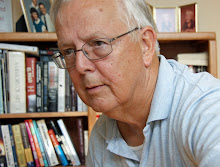Today, Dennis Rizzo reviews You Can’t Make This Stuff Up for us. Thanks, Dennis!
You Can't Make This Stuff Up:
The Complete Guide to Writing Creative
Nonfiction
By Lee Gutkind
270 pp. Da Capo
Reviewed by Dennis C. Rizzo
Lee Gutkind is founding editor of Creative Nonfiction
magazine and Writer in Residence at Arizona State University. It follows,
then, that he has some experience with the genre.
You Can't Make This Stuff Up brings his
cumulative insights to the public in an easy-to-digest and well-structured
presentation. Gutkind's narrative style embodies his experience with
storytelling. It offers you a seat in a cozy parlour, where you sip wine or tea
while listening to the author's casual remarks and anecdotes; not at all like
the authoritative text on writing it is.
 Creative non-fiction may sound like an oxymoron, but it is
reflected in the pieces we read almost every day. Journalism, magazine
articles, memoirs, autobiographies; all are non-fiction pieces which can be
massaged to read like fiction.
Creative non-fiction may sound like an oxymoron, but it is
reflected in the pieces we read almost every day. Journalism, magazine
articles, memoirs, autobiographies; all are non-fiction pieces which can be
massaged to read like fiction.
Despite the controversy over
its name – or perhaps because of it – creative non-fiction has become the most
popular genre in the literary and publishing communities. In the academic
community generally, creative non-fiction has become the popular way to write.
Gutkind tells us it is the 'story' that is paramount in all
writing, including non-fiction. You Can't Make This Stuff Up is true to
his philosophy. In it, he develops our view of creativity within the framework
of honest non-fiction writing and skewers those who manufacture or avoid the
facts in an effort to build a better story. He speaks of creative non-fiction
as a process which one must acquire through practice, and provides examples
both from renowned authors and scalawags to illustrate his points. He
consistently points to the push and pull between getting a good story and
telling the facts.
Truth is personal – it is what we see, assume, and believe,
filtered through our own lens and orientation. Although it may revolve around
the same subject or issue, the truth as one person perceives it may not be the
same truth another person sees. – Because a blurry line exists between fact
and truth, readers will usually make a judgement about the veracity of the
stories being told and ideas presented based on their faith in the narrator. – Making stuff up, no matter how minor or unimportant, or not being diligent in
certifying the accuracy of available information, endangers the bond between
writer and reader. ...you must be trustworthy and your facts must be right if
you're going to be a credible writer of non-fiction.
The book is divided into two sections. The first deals with
defining and explaining “creative” non-fiction, as the author sees it. The
definition is certainly definitive, since Gutkind was one of those who defined
the genre. The second section provides a series of “how to” exercises and
explanations. It offers insight into writing phenomenons, such as the “creative
non-fiction dance”; seductive juxtaposition of story and fact.
You Can't Make This Stuff Up provides key
elements of the craft of writing creative non-fiction for the professional and
amateur writer alike. Professionals may see some of their traditions and sacred
cows skewered – or not. Newcomers will find a series of exercises of graduated
difficulty which offer a path to honing their craft. Either way, Lee Gutkind
gives us the material with which to build our reputations as serious, writers
of creative non-fiction.










No comments:
Post a Comment